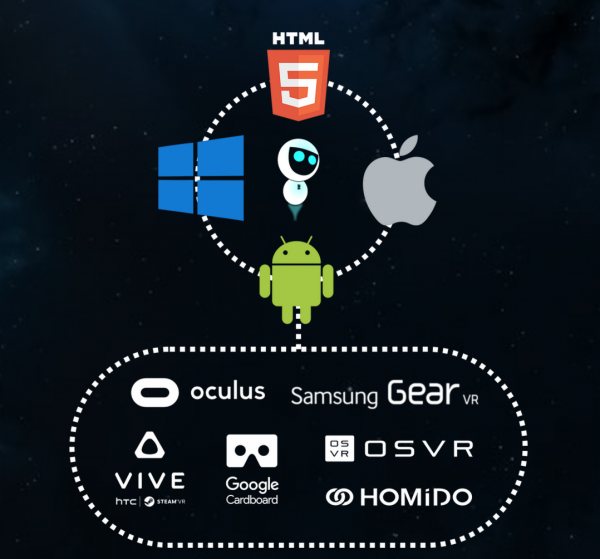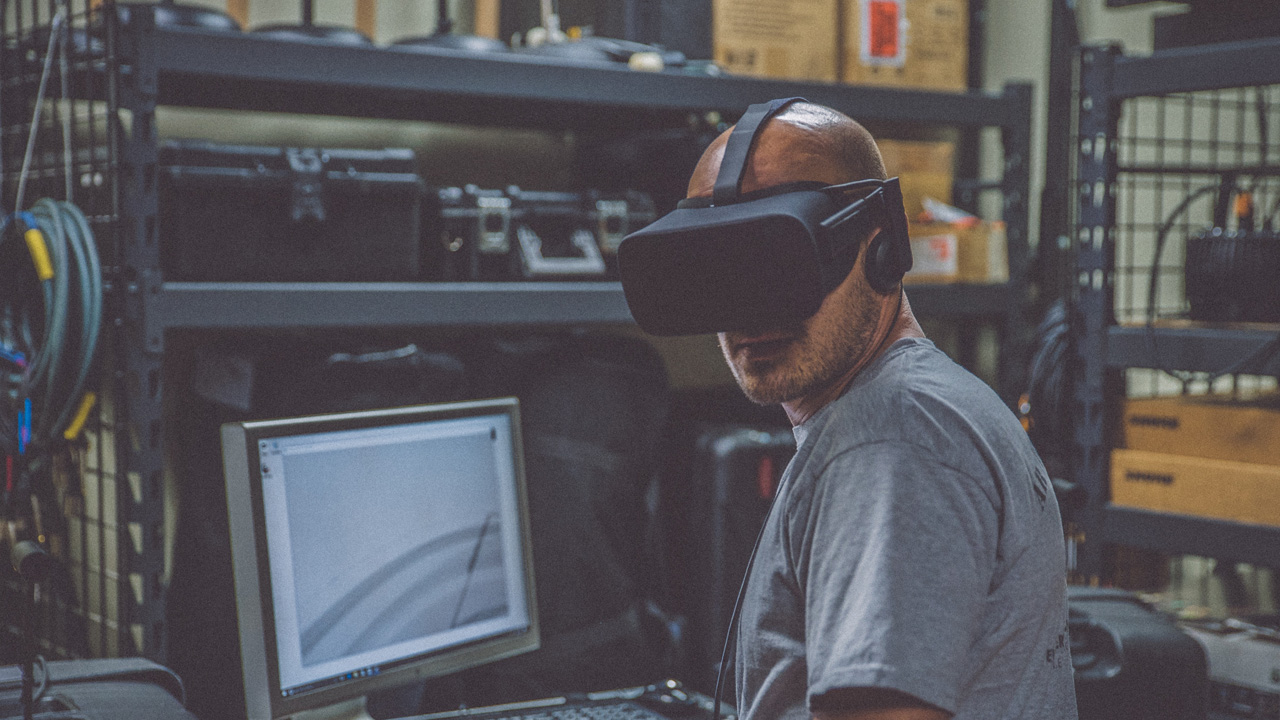We used to say seeing is believing. Now we have to say ‘experiencing is believing’.
It seems about 1 in 5 briefs we work on at the moment have a VR video component as brands and agencies look to explore the possibilities of the immersive and engaging world of 360 video and virtual reality.
The next 18 months will be a telling time. Let's see how audiences transition from standard video viewing to embrace VR and invest in a personal headset, closing themselves off from the real world to engage with the most immersive form of video content.
For anyone that has put on the Samsung Gear VR, Vive or Oculus, there is usually a wow moment when you realise just how immersive and engaging the VR video world can be. One thing is for certain we are just at the beginning of where the technology will lead us. It will be exciting to see what other AR/VR players like Magic Leap, Sony and Microsoft can bring to the table.
We know that premium publishers and tech giants are getting on board with big investments. Google is working on a VR version of Chrome. NBC and Samsung broadcasted the summer Olympics in VR. Hulu, Crackle, Jaunt, and Within already have dedicated apps, or “theatres,” where viewers can consume massive amounts of VR content.
The NBA (National Basketball Association) has also started creating longer form VR experiences with its mind-blowing VR production ‘Follow My Lead’ which tells the story of the 2016 NBA finals, taking audiences behind the scenes for an experience like no other.
Content innovation can lead to commercial investment
Now more than ever we are seeing significant brand dollars being spent on VR experiences that prove that content innovation can lead to commercial investment, leaving audiences feeling inspired by the bravery and courage of a brand to do something different in the VR space.
A great example of a brand investing in VR
One thing we know for sure is that when you are inside a VR experience you are the most captive audience a brand can have and the experience you create needs to be compelling. There is no other form of media right now that is as immersive as a branded VR video experience and brands need to take advantage.
The Numbers
Greenlight Insights released results this week from its survey of 1,300 adults that found the majority of consumers, 71% of them, feel that VR makes brands seem “forward-thinking and modern.” However, there’s even better news for brands’ bottom lines: 53% of respondents said they’d be more likely to purchase from a brand that uses VR than from one that doesn’t.
“We’re seeing specific VR activities have unique emotional footprints, offering fascinating insights for those who are considering their VR strategies,” Steve Marshall, SVP of Research and Consulting for Greenlight VR, said in a statement announcing the findings.
What is the perfect branded VR video experience?
It comes down to the brand objectives and how people will contextually be viewing the experience. When people are in groups with one person viewing a VR experience the viewer doesn’t want to feel trapped inside for too long (4-5mins max). They will want to share or talk about their experience soon after. When a viewer is alone with VR, the sky’s the limit, a viewer will stay engaged for longer and want to stay immersed.
‘Virtual reality by definition intensifies the impression of reality. All the viewer’s senses are heightened including sight, sound, and motion; content that delivers fully immersive experiences will be in high demand.’
Content that delivers a fully immersive experience will be in high demand
This potential for VR storytelling will take branded entertainment to a whole new level. Imagine Apple showcasing its VR capable iPhone 8 (yet to be released) where viewers can take part in a Mars landing and film the experience in first person using features on the iPhone 8. Viewers could zoom into the phone to play with a realistic, 360-degree model of the device or even watch a video shot with that new device, thereby zooming into an entirely new storyline set on Mars.
The Production Value
There are a number of aspects when considering the production value of producing VR or 360 video content.
VR is not the same as 360 Video.
While the two can be packaged up as a VR experience, there is a difference between the two. 360 video is effectively filming a real-world environment with a 360 camera, which can be produced in 2D using a whole range of cameras from consumer to prosumer or in stereoscopic 3D using more high-end professional-grade equipment.
Once captured 360 videos can have 3d, overlay graphic elements or interactive hotspots added to make the experience more engaging. A great example of a mixed live-action 360 video shoot and 3D environment can be seen here with Google Spotlight Story Help.
Help uses a mix of studio, 3D and real-world 360 videos. This is, of course, a pretty amazing experience best viewed in VR and not desktop. VR environments, games and stories that are completely virtual are created in 3D and compiled using software like Unity 3D or Unreal Engine.
2D vs 3D
If done right, VR created as a 3D experience is always going to be more compelling. 2D is a great way to create a high-resolution experience and keep production costs down. Poorly implemented 3D and 360 video footage can cause a great deal of discomfort to the viewer including headaches, eye strain or nausea. With a 2D video, you’re getting more resolution out of the device because you’re not having to stack the left and right channels (or top and bottom channels) within the phone’s limited resolution. Oculus CTO John Carmack explains, “People that are resolution-picky will probably prefer monoscopic videos, which can have twice the resolution of stereo videos. The stereo effect may not be worth anything to you if you can't get past the blurring.”
How To Get Views?
Virtual reality viewing roughly falls into 3 categories. First are desktop and mobile video player with no headset (think Facebook or YouTube 360 native players). Next are expensive headsets tethered to a computer, aimed mostly at gamers, like the Oculus Rift or the HTC Vive. Finally, there are mobile viewing experiences that combine with a smartphone, like Samsung's Gear VR or Google's Cardboard.
Marketers need to think about how and when audiences will be viewing their content and ensure they are driving people to experience branded VR through a quality headset. This should be coupled with the distribution of content to key VR publishers for optimal reach across platforms and devices. As with any type of video content distribution and seeding, a strategy is paramount.

